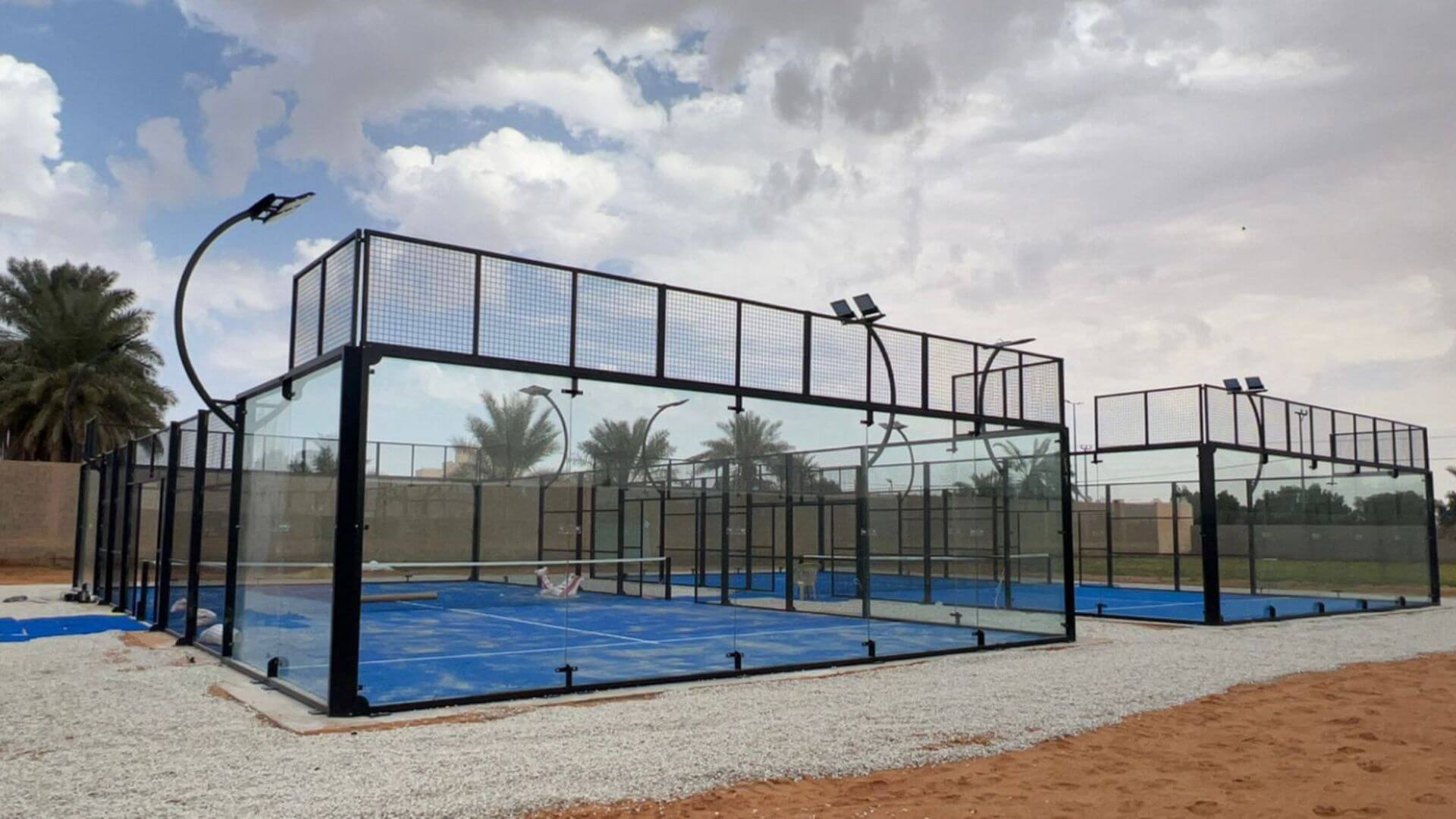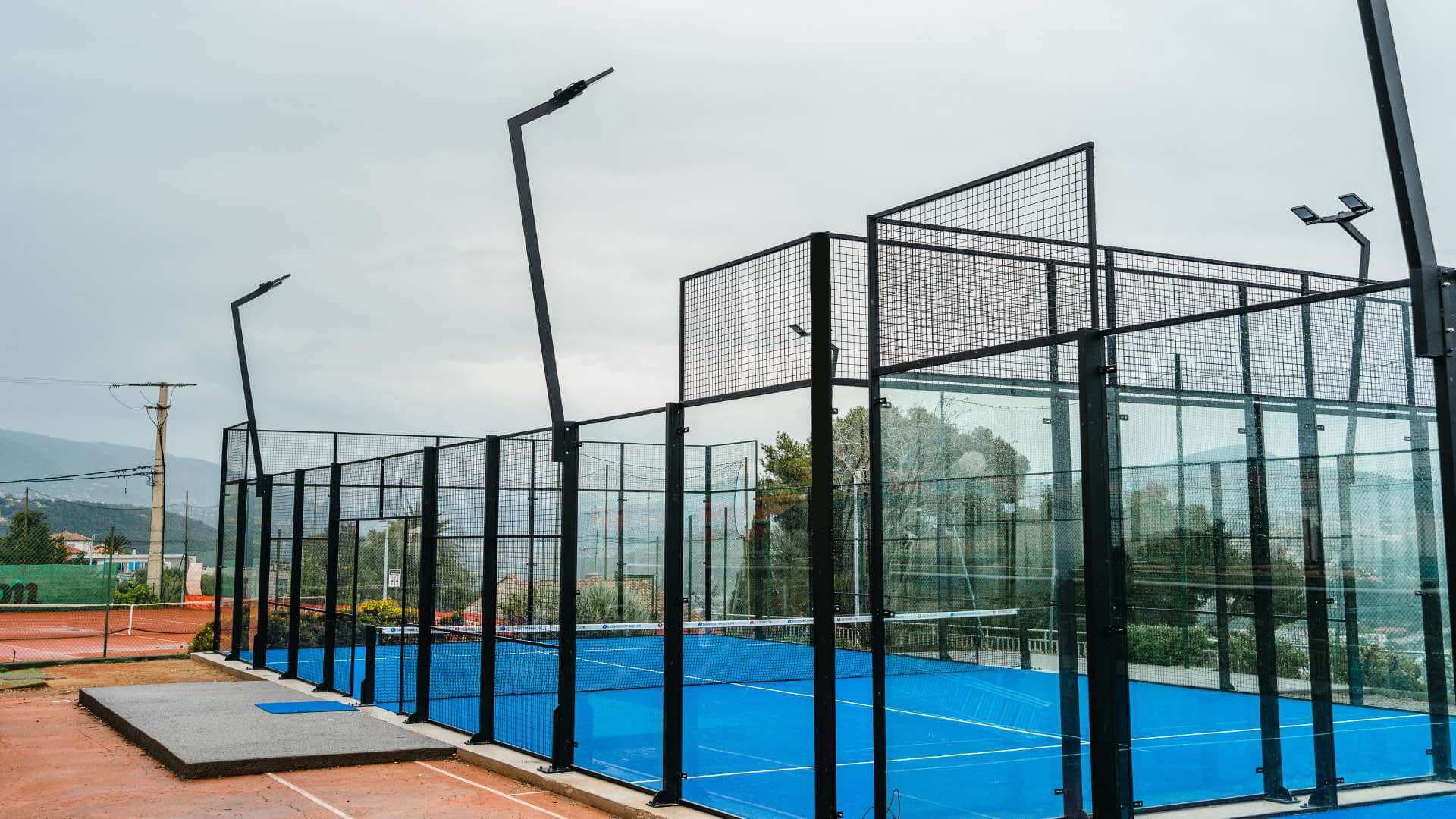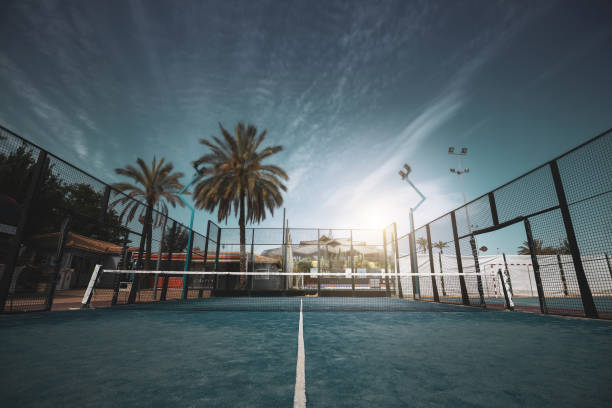As a leading manufacturer in the industry, we will provide you with a comprehensive, step-by-step guide on how to build a padel tennis court.
We will work together to address the critical parts and components, such as selecting the best location and installing vital elements such as netting, lights, or turf, to create the ideal court for you to enjoy this exciting game.
1. Planning
Location
Padel Alba understands the importance of location when designing a padel court. These are frequently found in sports clubs, public facilities, padel clubs, and private properties, and are tailored to the needs and tastes of each player.
Interior vs exterior
Climate is an important factor to consider when choosing a padel tennis court. Indoor courts offer stability in weather conditions and are equipped with air conditioning and acoustic systems.
Outdoor trails provide a natural and fresh environment, but they can be susceptible to inclement weather. The main thing is to choose the option that best suits your needs and preferences.
Dimensions
The first objective at the beginning of our planning process is to determine and confirm the available space for the construction of the padel tennis court.
We focus on areas that can accommodate our standard construction dimensions, which are 20 meters long, 10 meters wide and 6 meters high.
Ceiling height
Outdoor paddle courts do not require height considerations, while indoor courts should ideally have a ceiling of 8 meters, although 7 is the minimum acceptable. Professional and experienced players tend to prefer courts with higher ceilings.
Construction permits
Before building a paddle tennis court, it is very important to have information about the relevant permits to avoid unnecessary costs. The need for a building permit varies depending on the country and the area in which you plan to build.
As a result, before beginning construction, we recommend that you contact your local authorities to confirm the specific requirements of your location or region
Paddle court design
When you start a padel court design project, it is important to follow the recommendations of experts like Padel Alba, especially in terms of court orientation, taking into account environmental factors and course conditions.
Customize your paddle tennis court to fit your characteristics and needs, using our configurator or with the advice of our team of experts.
2. Construction
Soil
It is necessary to start the construction of a paddle tennis court with a meticulous inspection and topographic survey. This stage ensures that the terrain is ideal for the installation, thus guaranteeing a smooth game. Subsequently, we choose the most appropriate materials to ensure durability and ease of maintenance.
Our process reflects our commitment to precision and quality in every track we build.

Artificial turf
We know that the synthetic turf of a paddle court must be resistant due to its constant use in a reduced area. When selecting turf (monofilament and textured), consider the frequency of use, maintenance and expected life span.
It is recommended to use sand to fix the synthetic turf and facilitate quick movements. Depending on the type of grass, you will need between 8 and 12 kg of sand per square meter. At Padel Alba, we help you create the perfect court that fits your needs.

Structure
The creation of a paddle tennis court is a process that requires precision and experience, something we know very well. Every step is important, from the configuration of the structure to the installation of the glass walls, the distribution of the sand and the laying of the artificial turf.
Precision in the installation of artificial turf is vital to ensure an exceptional result, so we insist that only experts should handle this job.

Galvanized steel mesh
On the sides of the paddle court, glass sections are located adjacent to electro-welded mesh sections. The mesh is exposed to contact with the ball and to players who may collide with it during play.
Therefore, it is essential to have a quality and resistant galvanized steel mesh to ensure optimal play and minimize the risk of injury.

Glass walls
The paddle courts are constructed with premium quality glass panels, which are installed on a 5mm neoprene layer to increase their strength and minimize the risk of breakage.
The quality of the materials used in the construction of the padel courts is decisive to guarantee the safety of the players and the durability of the courts.

Lighting
Lighting is an essential component for a great playing experience in a padel club. We understand that proper lighting should not dazzle players, and should be evenly distributed throughout the court, allowing play at any time of the day.
Choosing the right lighting solution for your padel club is a decision that must balance budget and quality.

Network and Supplies
Having a quality netting system in place reduces the possibility of ball deflection, especially in multi-court venues.
You have the option of incorporating comfortable benches, visible scoreboards, approved net tensioning and attractive and functional court colors. All these elements come together to provide a satisfying and complete playing experience.

Maintenance
Padel tennis courts need constant supervision. Properly maintaining a court not only improves playing conditions, but also extends its durability.
The specific care for each padel tennis court may vary according to its type. It is advisable to clean the glass walls monthly and sweep the artificial turf weekly, although in some artificial turfs this task may be less usual.
Monthly inspections of the glass walls and annual maintenance of the artificial turf are essential .
Tips for building a successful padel tennis court in a sports club

In our experience as padel court manufacturers, we have learned some important tips to help you build a successful court in your sports club.
If you are considering adding these options to your club, there are several additional steps and factors to consider to ensure you get the return on investment you want. Here are some key recommendations to help you get there.
Ensures sufficient ceiling height and adequate illumination
To ensure an excellent playing experience in a padel club, adequate lighting that avoids glare and is evenly distributed is required.
Remember, this decision affects not only the game, but also the club’s profitability, so explore alternatives.
Optimizes acoustics
By opting for outdoor padel tennis courts, acoustic problems derived from the intense sounds of the game are mitigated.
An effective solution for managing acoustics in interior spaces includes measures such as the use of acoustic fabrics on walls, which absorb sound and prevent undesirable light reflections.
Continually evaluates economics and profitability
To ensure the profitability of your padel club, it is important to continuously evaluate the economy and performance.
This involves optimizing space utilization, monitoring lead occupancy rates, examining average sales per customer and regularly reviewing pricing strategies, all in order to prioritize customer value.
Build a private padel tennis court at home
The construction of a private padel tennis court on your property requires different considerations than those of a sports club, since the needs are not the same.
When selecting a company for this project, it is important to opt for those that offer guarantees and professionalism such as Padel Alba, thus ensuring the durability and quality of your investment.
Final thoughts

The construction of a padel tennis court involves multiple stages carefully planned and executed on different sites, whether in a sports club or on private property.
From initial planning considering location, dimensions and necessary permits, through design, choice of materials and actual construction, to subsequent maintenance, everything requires an expert eye and attention to detail.
It is recommended to collaborate with professional manufacturers that offer guarantees and full support, such as Pádel Alba.

